#napoleonic reforms
Text
Napoleon and Water
Excerpt from the book Aaron Burr in Exile: A Pariah in Paris, 1810-1811, by Jane Merrill and John Endicott
Aaron Burr lived in Paris for 15 months, and this book goes into detail about those years living under Napoleon’s rule. This part focuses on Napoleon’s water related reforms.
———
Napoleon’s fountains gave drinking water to the population, that is, children drank water, not beer. The water was free, not purchased. And the apartment would have had a separate water closet equipped with squat toilets (adopted from the Turks) and a bucket to wash it after use. Some restaurants and cafes had W.C.s, even one for ladies and one for gents. These were hooked into the sewer system that branched under each important street.
Napoleon merits points for delivering fresh water to Paris. If serving Paris with water from the d'Ourcq River by canals was not be a consummate success, Paris gained 40 new fountains, and the emperor commanded that fountains run all day (instead of a few limited hours) and that the water be free of charge.
Perhaps the most laudable of Napoleon’s policies were utilitarian city works, especially bringing clean water and sanitation to Paris. The improvements to infrastructure included new quays to prevent floods, new gutters and pavement, new aqueducts and fountains, and relocating cemeteries and slaughterhouses to the outskirts of the city. This was also a way of keeping up employment. An Austrian aristocrat in town during Napoleon’s wedding to Marie-Louise wrote his mother, in Vienna: “Nothing can give an idea of the immense projects undertaken simultaneously in Paris. The incoherence of it is incredible; one cannot imagine that the life of a single man would be enough to finish them.”
It was a tall order. Previous rulers had been aware of the problems and one big engineering initiative, a failed marvel, had been the waterworks at Marly, located on the banks of the Seine about seven miles from Paris. Louis XIV had it constructed to pump water from the river to his chateaux of Versailles and Marly. This was the machine marvel of its age, with 250 pumps that forced river water up a 500-foot rise to an aqueduct, and it was a sight Burr mentions going to see. By 1817 the “Marly machine” had deteriorated because it was made of wood, and the waterworks were abandoned.
Charles-Augustin Sainte-Beuve, the prominent 19th century literary critic, wrote that there had been “ten years of anarchy, sedition and laxity, during which no useful work had been undertaken, not a street had been cleaned, not a residence repaired nothing improved or cleansed.” Postrevolutionary Paris was at a nadir in terms of both the inadequate, disease-ridden water supply and the filthy streets, which were basically open sewers, deep with black mud and refuse.
“Napoleon,” writes Alistair Horne, “was obsessed by the water of Paris, and everything to do with it.”
Parisians had mostly been getting their water directly from the Seine or lining up at the scant pay fountains. In 1806, nineteen new wells for fountains were dug that flowed day and night and were free. Napoleon had a canal built 60 miles from the River Ourcq, ordering 500 men to dig it, while still a consul in 1801. It brought water to the Bassin de la Villette, opening in 1808. Some doubted the wisdom of having such an abundance of water—an oriental luxury that might incur moral decay. Now the supply of water for firefighting was also much improved. The canal had light boats, as Napoleon tried to make back some of the huge expenditure by licensing navigation, and a circular aqueduct from which underground conduits went to the central city. In 1810, there were still many water porters wheeling barrels through the city.
Now Napoleon attacked the problem of the Seine as a catchall for pollution. Parisians were so used to it that men swam naked in the river and a contemporary guidebook advised merely that the water of the Seine had no ill effects on foreigners so long as they drank it mixed with wine or a drop of vinegar. Thus houses on bridges were demolished and an immense push began to clean and modernize the city sewers.
As this book is about Aaron Burr, here is section about Burr taking inspiration by a new water related invention during his time in Paris:
Remarkably for someone who was very aware of his health, he never complained of the water. He did, however, take an interest in an invention to make it easier to dig a well. When the inventor of a process to make vinegar from the sap of any tree was not in his shop, Burr and a friend, “Crede”, went to see another invention: “We went then to see Mons. Cagniard, and his new invention of raising water and performing any mechanical operation. His apparatus is a screw of Archimedes turned the reverse, air, water, and quick silver. Cagniard was abroad; but we saw a model, and worked it, and got the report of a committee of the Institute on the subject. If the thing performs what is said I will apply it to give water to Charleston.”
[Bold italics for quotations by me]
#Aaron Burr in Exile: A Pariah in Paris 1810-1811#Aaron Burr#Jane Merrill#John Endicott#napoleon#napoleonic era#napoleonic#napoleon bonaparte#first french empire#french empire#19th century#france#history#Paris#french history#water#water history#Napoleon’s reforms#social reforms#social history#reforms#napoleonic reforms
100 notes
·
View notes
Text
“I have reconsidered my opinion of the first consul. Since becoming Consul for Life, the veil has fallen and things have gone from bad to worse. He began by depriving himself of the finest glory reserved for a human that it remained for him to gather: proving that he was working without any selfish interest, solely for the happiness and glory of his country and faithful to the constitution to which he himself swore, to relinquish after ten years the power he held in his hands. Instead of that, he has preferred to mimic royal courts while violating his country’s constitution. Now he is one of the most infamous tyrants that history has produced.”
- Alexander I on Napoleon in his letter to his former teacher, Laharpe (1803)
#I can’t help but think that this bitterness towards Napoleon comes from Alexander’s genuine belief that he would do better in his place#after bemoaning the state of Russia that he was reluctant to govern and powerless to reform he looked at France and thought#‘now here’s a country I’d do so much good for if I was in charge’#napoleon bonaparte#tsar alexander i#napoleonic wars#correspondence#alexander i of russia
8 notes
·
View notes
Note
Heyy :) thanks a lot for answering my previous question so nicely!
I felt bad for count grunne when he was flogged for trying to protect that soldier, he was the only one who had the guts to stand up to franz when nobody else dared. Even tho grunne is a very close friend, franz didn't spare him i was wondering what happened to that poor soldier? Maybe he was fired or something worse than grunne ?
So it's just a quick moment but I'm pretty sure this guy is the same guy.

So the implication would be that he got the full flogging. My best guess for afterwards would be a dishonorable discharge. Plus the after-effects of the physical injuries from the flogging, which would have been significant. The show sanitizes how bad these floggings could be, though it does bear repeating that this particular type of extremely severe physical punishment was more typical of militaries of the 1700s than those of the 1800s.
#thank you for the ask#it was actually one of the Napoleonic era reforms#before that the men were supposed to be more scared of their own officers than the enemy#but the differences of Napoleonic armies#and the reforms that forced on#among others#the Austrians#by necessity#corporal punishment was mostly done away with
3 notes
·
View notes
Text
Studying history in the Temeraire universe must get really strange once dragons are recognized as historical figures in their own right. You read about Temeraire in class. He’s one of the most important figures in the napoleonic wars and the subsequent period of reforms. The photograph of him in your textbook is a sepia toned one from the 1860s. You know intellectually that he’s still alive but you don’t really comprehend it until you catch his cameo in The Dark Knight Rises. He insisted on making an appearance because it was filmed in his captain’s childhood home. He’s playing himself. He has a four line conversation with Batman.
#Temeraire#Wollaton hall really is Wayne manor in TDKR#so Laurence grew up in Batman’s house#which is one explanation for why he keeps adopting so many kids
2K notes
·
View notes
Text
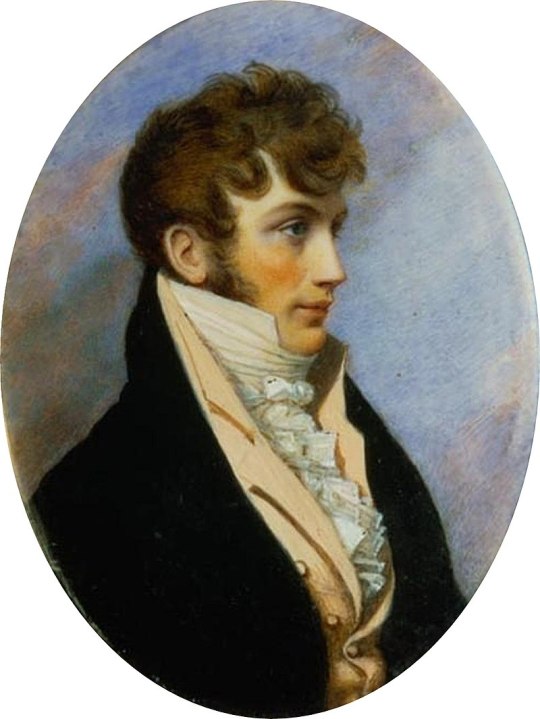

Benjamin Bathurst
(admin note: even if you don't vote for him, his mysterious disappearance is a fun rabbit hole)
Propaganda: “have you SEEN him? glorious regency-dandy perfection -- that hair, that nose, those lusciously thick sideburns! he was a spy as well, and we all know that spies are magnificently fuckable… and also he disappeared mysteriously, leaving behind only a fur coat and an exciting legend! what's sexier than that!!”
Napoleon I
Propaganda:
a. “It’s the Napoleonic wars! He’s the main guy here!”
b. “Everything. Just, everything.”
c. “He has something wrong with him (affectionate)”
d. “I don’t know how to write propaganda, so I’ll just say this: Napoleon was a cutie, a world soul, a revolutionary emperor, and a great social and legal reformer. On the subject of physical appearance and attractiveness: He could pull off any look. Whether he was wearing a general’s uniform while riding a galloping white horse or wearing a laurel wreath in the Notre-Dame Cathedral or cuddling up in a large grey coat, he was cute af. He was a short king (above average height for the time). People fainted in his presence (I’m not even kidding, this did actually happen). He went so hard they declared war on him. And that’s pretty neat. He had beautiful hands. For some reason, there are multiple sources commenting on how pretty and gorgeous his hands were. And that’s a weird but cool trait to have. He was beautiful. His eyes were very pretty. Described as both crystal-like and fiery during different instances. His smile (which you can’t really see in any painting) was supposed to be one of his most charming features. His voice was described as “musical and deep” (from the diary of Bertie Greatheed). Personally, I think he looks like a fluffy panda or a baby seal. As a person, he was a very sweet, affectionate and unusually forgiving (maybe even naively so). He was also a funny and witty person. He enjoyed telling ghost stories, singing along to opera (badly), reading reports (for fun), taking baths, gossiping with his wife, and going to the library.”
#napoleonic sexyman tournament#to the last person: you wrote perfect propaganda#it's like a dating profile
238 notes
·
View notes
Text

How accurate is the new Napoleon film? Sorting fact from fiction (Andrew Roberts, The Sunday Times, Nov 19 2023)
"Sir Ridley Scott’s long-awaited movie Napoleon will have a great effect on how the French emperor is viewed in the popular imagination.
So it was with some trepidation that I watched it.
Would it reproduce the old Anglo-American historical stereotype of a jumped-up Corsican tyrant, or might it recognise that in fact Napoleon created the Enlightenment’s institutions, many of which last to this day?
For here was an opportunity to change the tired conventional view of Napoleon put forward by so many postwar Anglophone historians that Napoleon was essentially merely a prototype for Adolf Hitler.
Sadly and somewhat predictably for an 85-year-old whose mindset was formed by the Second World War, Scott has gone for the intellectually discredited stereotype of a dictator who goes mad with hubris. (…)
Scott has remarked before that “f***ing historians” don’t know what happened in Napoleonic times because “they weren’t there”.
But in fact there is a plethora of believable first-hand accounts from people who were indeed there, used by historians to discover what happened.
What these first-hand accounts tell us is that Napoleon was a witty, highly intellectual and attractive personality, whose reforms changed first France and then Europe for the better.
Whenever his armies entered European cities they liberated the Jews from their ghettos, giving them civil and religious liberties.
He was therefore precisely the opposite of the malignant, humourless, Jew-hating Führer. (…)
So firm is the assumption that Napoleon’s psyche had “run wild” that he is given the line to Joséphine: “I must begin my march to Moscow.”
Yet the whole point of the 1812 campaign was that Napoleon had no intention of going more than 50 miles inside Russia, in what was intended to be a three-week campaign.
As he crossed the river Niemen, there was no “march to Moscow”.
There are plenty of people in history who have a Napoleon complex, but Napoleon himself was not one of them, despite what Scott and Kirby might say.
This show also assumes Napoleon lost in Russia solely because the weather got cold in winter, as if the highly intelligent and well-read emperor did not know it would.
No mention is made of the typhus that killed 100,000 men, which Napoleon could not have foreseen.
At one point in the movie, Joséphine forces Napoleon to say: “I am just a brute that is nothing without you.”
Quite apart from the appalling syntax, the line, like so many in this visually stunning but historically tone-deaf film, fails to ring true.
Yet it is not from thousand-page biographies that the mass of people take their history today, but from movies like this.
Henceforth, therefore, Napoleon Bonaparte — the great world force of the Enlightenment who ended the French Revolution and dragged country after country out of ancien-regime torpor and into the vibrant 19th century — will merely be a brute who was nothing without his Joséphine."
273 notes
·
View notes
Text
I think one of the things I appreciated the most about Nocturne was the protagonism on the Haitian Revolution.
This was a revolution that didn't just change Haiti, it changed the world. This was the revolution that would make the first black state. The first slaveless state. That would make every slave nation tremble with fear, from Europe To America to Asia to Oceania to Africa. It was what was never meant to happen, but did.
It's the nation that would defeat Napoleon and the British marine. Nobody could take down Haiti. You know why Napoleon went to colonize Europe? Haiti. That's why. He couldn't take down Haiti. Couldn't make it french territory again. So, he turned towards Europe.
We are talking about an undefeated nation.
AND! AND! A largely Vodu nation!
I was SO happy to see Vodu be portrayed as the wonderful religion it is, sacred and divinely intertwined with the Haitian revolution. The revolution was noted to start with Vodu chants and ritual.
White people refused to understand the link between the two worlds that could bring ancestors to meet their descendants. They created zombies as a horror trope. They made vodu dolls as a horror gimmick. They took a sacred religion and reduced it and vilanized it.
And I'm so happy to see it being positively portrayed in such a famous media. Vodu practicioners have already made media of the like. But I was positively surprised with what Nocturne had to present to us.
Of course, the knowledge that the french revolution was incomplete, that it was NOT FOR EVERYONE, is then again, something I really appreciate as a history student and a person. The french revolution killed mostly peasent and established the bourgeoisie, but did it end the Noir Code? No. Did it establish women's and black people's suffrage? No. Did it make a agrarian reform? No. Was it for the people? It had it's importance. But it was, at the very least, not for all the people.
And let's not forget that the french revolution's main intellectual current would birth biological racism, an unscientific current that claimed evidence of "different sized skulls" for example to prove humans possessed different races based on phenotypes.
Last, but certainly not least: it is absurd to see people claim that "all indigenous people have been killed". Acknowledging multi-ethnic indigenous genocide HAS to go along with the respect that there STILL are indigenous people and they continue their fight for their lives and land.
You know who the show demonstrates as such? Olrox.
While I don't appreciate the show claiming "all of his people were slaughtered" as that is historically inaccurate, I was most happy to see an Aztec vampire present and very alive, connected to his culture, protagonizing the show. The Nahua are still very much alive and kicking and I appreciated that the show took that into account.
And Annette! Sweet Annette being one of the leads makes me most joyful. I can't stand idiots that claim her presence.on France was """historically innacurate""", check again, dumbasses, free black people were all over France (especially the children of black Caribbean elites, for example, from Haiti back then known as Saint-Domingue, which did not possess universities and would sent their children to study in Europe.)
Anyway. To see her star as one of the leads made me so incredibly happy. She's a wonderful character and I appreciate how they let Annette be unapologetic and direct, especially during a moment between revolutions were she was very aware the french revolution didn't mean shit to her people.
But she was so lovely and to see her afro-caribean religion present AND source of her power made me emotional more than a few times.
Castlevania Nocturne really did hit this nail on the head.
Anyways. To make sure I give people answers to "but where's the evidence to x thing you said?" Here are my sources:
THYLEFORS, Markel; “Our Government is in
Bwa Kayiman:”A Vodou Ceremony in 1791 and
its Contemporary Significations, 2009
DUBOIS, Laurent; Avengers of the New World : the story of the Haitian Revolution, 2004
BUCK-MORSS, Susan; Hegel, Haiti and universal history, 2009
#Castlevania nocturne#Haitian revolution#French revolution#castlevania annette#richter belmont#castlevania netflix#maria renard#tera renard#castlevania edouard#olrox#castlevania olrox#castlevania spoilers#I'm just a history student who really likes Haitian history#and who's sick and tired to see people glorify the french revolution#like if you wanted a revolution that was truly liberating and radical and you know REVOLUTIONARY#the Haitian Revolution is RIGHT THERE#like HELLOOOOOO#and i'm so sick of seeing Vodu religion demonized#it's a beautiful religion and it shouldn't matter what you think of it#it deserves to be respected#we all have a responsibility in anti-racism and anti-religious oppression#so work
235 notes
·
View notes
Photo

Napoleon Bonaparte
Napoleon Bonaparte (1769-1821) was a Corsican-born French general and politician who reigned as Emperor of the French with the regnal name Napoleon I from 1804 to 1814 and then again briefly in 1815. He established the largest continental European empire since Charlemagne and brought liberal reforms to the lands he conquered at the cost of the destructive Napoleonic Wars (1803-1815).
Continue reading...
172 notes
·
View notes
Text
Napoleon and Sewers and Sanitation
Excerpt from the book Aaron Burr in Exile: A Pariah in Paris, 1810-1811, by Jane Merrill and John Endicott
Napoleon began in 1805 to build a modern vaulted underground sewer system in Paris, following the topography of the streets. Practical changes for the better were already in place when Burr was in Paris. Sewer floors were lowered and new lines were created everywhere between 1805 and 1812, while at the same time the existing sewers were disinfected and the flow of water purified.
During the Enlightenment there was a movement for improved hygiene in France, and investigations of public health. Napoleon was a forerunner of hygiene for his armies and for Paris. In the first place he paved streets and did away with the flowing gutters in the middle of the road. Second, he wanted to give Parisians clean water. In 1802, he commissioned Pierre-Emmanuel Bruneseau as his inspector of works for the City of Paris to chart the sewer system and also keep them clean. Under Napoleon, the existing network was extended, 19 new miles of sewers were added. By 1812, vast improvements had been made.
Bruneseau died in 1819, but Baron Haussmann studied Bruneseau’s maps in the mid-century, rebuilding, constructing new gas-lit and vented sewers. The sanitation models of Paris were adopted by other cities in France and around the world.
A survey of 50 kilometers took seven years. It was dangerous as well as putrid work. While Bruneseau was hailed as an intrepid adventurer, he had difficulty all along with hiring assistants to keep up with him. Victor Hugo was Bruneseau’s friend and hailed him as an adventurer. The engineer inspired Hugo to write the portion of Les Misérables in which Jean Valjean carries Marius, wounded at the Barricades in 1832, through the sewers to safety. Hugo called the sewers “the conscience of the city” and created a whole metaphor around the sewer system: “A sewer is a cynic. It tells everything.” It wouldn’t have been possible for Jean Valjean to make his way carrying Marius through the sewers before the curage methods introduced by Bruneseau. The rushing water when gates are opened to clean the sewers with great hydraulic force, as well as the manholes and dripping pipes, are well described in the novel.
[Bold italics for quotations by me]
#napoleon#Pierre-Emmanuel Bruneseau#victor Hugo#Hugo#Les mis#Les Misérables#Bruneseau#napoleonic era#napoleon bonaparte#Aaron Burr#Burr#Aaron Burr in Exile: A Pariah in Paris 1810-1811#Paris#France#sewers#french history#history#first french empire#french empire#19th century#napoleonic#Baron Haussmann#Haussmann#napoleonic reforms#reforms#Napoleon’s reforms
45 notes
·
View notes
Photo


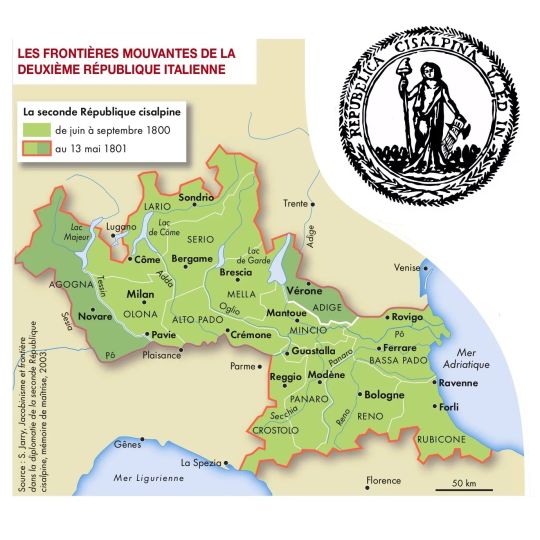

Italy from 1796 to 1805
Cartes 1-4 & 6 : « Atlas de la révolution française », Beaurepaire & Marzagalli, Autrement, 2016
Carte 5 : « Atlas de l’empire napoléonien », Chappey & Gainot, Autrement, 2e éd., 2015
by cartesdhistoire
The incursion of Bonaparte's army into Italy in the spring of 1796 was primarily a diversion to relieve pressure on the Rhine front. However, its success quickly opened up new possibilities: French support and the activism of local patriots led to the establishment of sister republics. Over three years (1796-1799), known as the Triennio, the political landscape and institutions of the peninsula underwent significant changes. This period, marked by reforms and democratic achievements, as well as the involvement of individuals previously excluded from public affairs, is crucial for understanding how the Triennio influenced the attitudes of both elites and the general populace during and after the Napoleonic era.
However, the sister republics collapsed in the spring of 1799 in the face of the successes of the Austro-Russian armies of the Second Coalition and the armed uprisings of peasants incited by the clergy and angered by French abuses. Naples surrendered in June 1799, and the repression there was severe.
The political landscape of the peninsula was once again reshaped by France following the Second Italian Campaign, which began in 1800. The Cisalpine Republic, reinstated after the Battle of Marengo and expanded during the Peace of Lunéville, gave way to the Italian Republic in 1802, then became a kingdom in 1805. The kingdom's territory expanded to include Veneto and Istria (1805), the Marche region (1808), and South Tyrol (1810). Thanks to the Vice-President of the Italian Republic, Francesco Melzi d'Eril, the political efforts during these years resulted in the establishment of a modern state and significant reforms in administration, justice, and the military.
The Napoleonic experience helped to politically educate the Italian elites, providing them with a shared institutional and legal framework, as well as standardized administrative practices, which made the idea of unity feasible.
82 notes
·
View notes
Note
Someone on Twitter asked who was the British politician who has harmed the British people the most. Of course all the answers were modern politicians - the earliest suggestion was James Callaghan. Looking further back in history, who were the really bad British politicians?
In order to not answer this with a long list of "History's greatest colonialist monsters," I'm going to focus on just the ones who had a negative effect on "the British people," and in order to not answer that with a long list of "the history of English oppression of the Irish," I'm going to focus on just harm done to "the people who lived in what is currently the U.K." I am well aware that this is highly restrictive, but I don't have the time to write a complete history of Britain.
So who's on my shortlist?
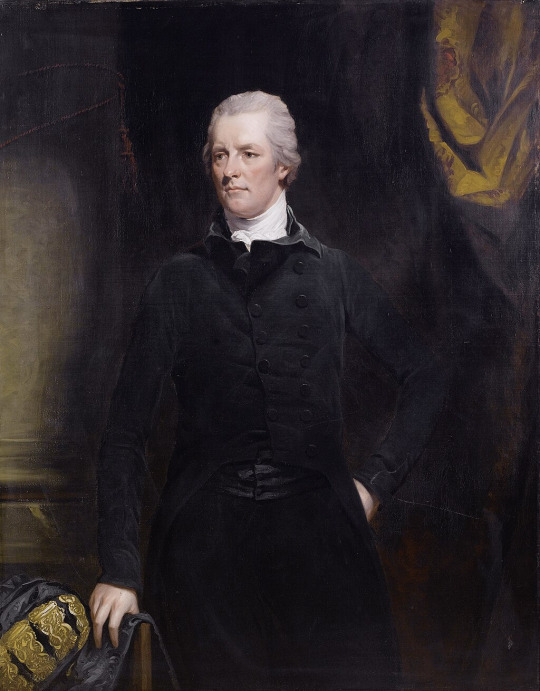
Pitt the Younger. Fought the Napoleonic Wars on the backs of the poor while violently suppressing any dissent with a police state. He passed the Treason Act of 1795 to criminalize dissent, the Seditious Meetings Act of the same year to criminalize public assemblies, spied on pretty much anyone who wasn't an arch-Tory, suspended the writ of habeus corpus, and passed the Combination Act of 1799 to criminalize trade unions. In a just world, would have died on a guilottine in Trafalgar Square.
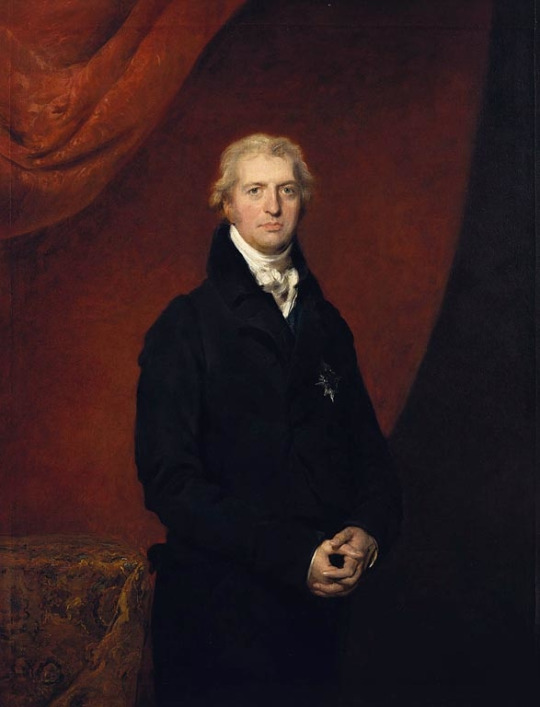
Lord Liverpool. In the wake of the Peterloo Massacre which he was absolutely responsible for, passed the Six Acts to allow the government to search people's houses for arms without a warrant, arrest and transport people for owning weapons or attending a meeting that was deemed to involve unlawful military drilling, reduced due process, shut down all public meetings that involved politics or religion, arrest and transport anyone who wrote anything that criticized the government or Christianity, and heavily tax and impose bonds on newspaper publishers. In a just world, the Cato Street Conspirators would have exercised better tradecraft and assassinated him and his entire government.
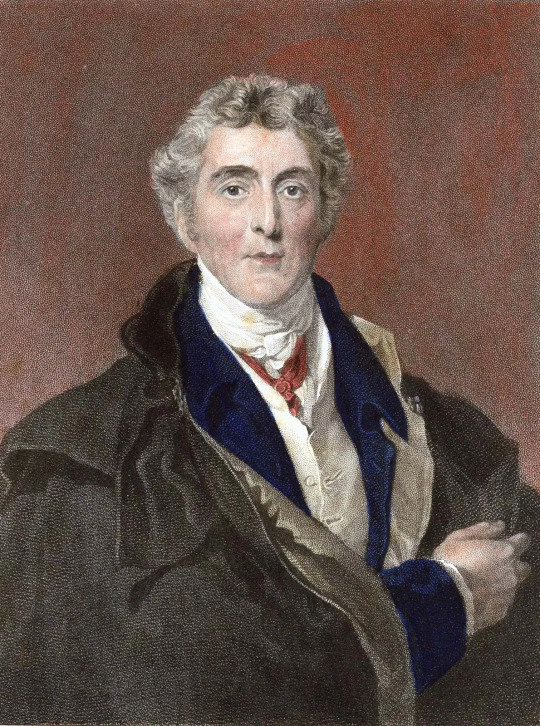
Arthur Wellesley, the Duke of Wellington. Followed up his victory in the Napoleonic Wars by fighting a war against the British people. Arch Tory bastard, adamantly opposed any political Reform that would enfranchise ordinary people, and opposed Jewish emancipation while supporting Catholic emancipation. To be honest, I wish the mob had torched Apsley House with him inside when they had the chance.
As for the runners-up?
Bonar Law, Stanley Baldwin, and Ramsay fucking MacDonald for dropping the Geddes Axe and then subjecting British workers to twenty years of crippling austerity and repression.
83 notes
·
View notes
Photo

Ensemble
c.1790
France
The dualities and contradictions that characterized male fashion in the early Napoleonic period are captured in this spectacularly schizophrenic ensemble. Under the disintegrating forces of the French Revolution (1789-1794), the 18th century confidence, some might say smugness, in its uniformity of aesthetic beliefs was to disappear. The restless need for social and political reform, which began in the 1780s and was fostered through the works of the philosophes, resulted in new patterns of consumption and new forms of self-expression. For a time, however, the ideas, values and aesthetics of the Ancien Régime competed and co-existed with those of the founding Republic.
This jockeying for position between the old and new elites gave birth to a variety of hybrid or transitional styles of dress, this suit being an outstanding example. Comprising a coat with narrow sleeves and a straight, cut-away skirt, a short vest or gilet and a pair of breeches that covered the legs below the knees, it recalls the cool Neoclassicism of the Enlightenment. At the same time, its simple lines and complete absence of decoration reflects the Anglomania that had been a feature of male fashions in France since the 1740s, but which came to the fore in the 1780s. The opulence and frenzied frivolity of Ancien Régime court dress or habits à la française, however, remain in its luxurious fabric and its lurid, effervescent color. Its stand-up collar is also a vestige of the old order, but its exaggerated height anticipates the style of the Incroyables. Like these giddy young men of the mid- to late 1790s, the wearer of this suit was almost certainly an élégant, an 'enlightened' aristocrat who hid his anti-Jacobin tendencies by adopting the puritanical design vocabulary of the republicans.
The MET (Accession Number: 2003.45a–c)
#ensemble#fashion history#historical fashion#menswear#mensfashion#1790s#empire era#napoleonic era#france#1790#green#silk#18th century#the met
365 notes
·
View notes
Note
petition for that long rant on revolutions here, i really enjoyed the way you laid out your facts and explained the first rant and am not too good at reading theory myself (i am still trying tho) thanks!!
Okay okay so the problem with revolutions is they get messy. Real messy. You get counter-revolutionaries, moderates, extremists, loyalists, and everything in between. One revolution turns into 5, and even if your side wins, its almost guaranteed to have been tainted some way or another along the way.
Take the first french revolution. It started as civil unrest, the estates general initially called for reform of the french state into a constitutional monarchy similar to Britain. Even king louis XVI was in support of this. But extremists wanting a republic and counter-revolutionaries wanting absolute monarchy clashed and things became more and more chaotic and violent. Eventually the extremists won, the jacobin reign of terror ensued, and 10s of thousands of people were executed. Now don't get me wrong, i am all for executing monarchs and feudal lords, but look what happened a few years later; Napoleon used the political instability to declare himself emperor, a few more years later his empire had crumbled, and the monarchy was back with Louis XVIII.
Or take the 1979 iranian revolution. It started as protests against pahlavi, who was an authoritarian head of state and an American pawn. As the protests turned into civil resistance and guerilla warfare it took on many different forms. There were secularists vs islamic extremists. There were democrats vs theocrats vs monarchists. Etc. Through all the chaos, Khomeini seized power, held a fake referendum, and declared himself supreme leader and enforced many strict laws, particularly on women who previously had close to equal rights. Many of the millions of women involved in the revolution later said they felt bettayed by the end result.
Or the Russian Revolution. It started as protests, military strikes, and civil unrest during WW1 directed at the tsar. He stepped down in 1917 and handed power over to the Duma, the russian parliament. This new provisionary government initially had the support of soviet councils, including socialist groups like the menshiviks. But they made the major mistake of deciding to continue the war. Lenins bolsheviks were originally a very tiny group on the fringes of russian politics, but they were the loudest supporters of peace, so they gained support and organised militias into an army and thus began the russian civil war. Lenin won and followed through on his promise to end the war against germany, but its a bit ironic that they fought a civil war, that killed about 10 million people, just to end another war.
Im not saying any of these results were either bad or good. They all have nuance and its all subjective. But the point i am trying to make is that they get messy. The initial goals will always be twisted.
France wanted a constitutional monarchy, they got an autocratic emporer.
Iran wanted democracy and an end to American influence, and well they ended american influence alright but also got a totalitarian theocrat.
Russia wanted an end to world war 1 and got one of the bloodiest civil wars in history.
I cant think of a single revolution in history that achieved the goals it set out to achieve.
But again, im not saying this is necessarily a bad thing, just a warning against revolutionary rhetoric and criticisms of reformism. Sometimes revolution is the only option, when you're faced with an authoritarian government diametrically opposed to change, then a revolution may be worth the risk. But it is a risk.
But if you live in a democracy, claiming revolution is the only way is actively choosing both bloodshed and the risk of things going horribly wrong over the choice of peaceful reform.
So when i go online in some leftist spaces and see people claiming revolution in America or UK or wherever is the only way out of capitalism I cant help but feel angry.
I know our democracy is flawed, and reform is slow and can even go backwards, but we owe it to all the people who would die in a revolution to try reform first.
I know socialist reform is especially hard in our flawed democracy where capitalists own the media, but if we can't convince enough people to vote for socialist reform what hope do we have of convincing enough people to join a socialist revolution. Socialism is supposed to be for the people, but how can you claim your revolution is for the people if you can't even get the support of the people?
So what I'm trying to say is; if youre one of those leftists that are sitting around waiting for the glorious revolution, doing nothing but posting rhetoric online - at least try doing something else while you wait. Join your labour union, recruit your coworkers, get involved in your local socialist parties, call your local representatives (city council, senator, governor, member of parliament, whatever) and make your opinions known, push them further left, and keep pushing.
#thank you anon this waa fun#also when i say i cant think of any revolution in history that achieved its goals#im not counting wars of independence#i know americans call the american war of independence the revolutionary war but its not a revolution l#(for reference - the first rant that anon mentions is a reblog a couple days ago about the communist manifesto)
68 notes
·
View notes
Text
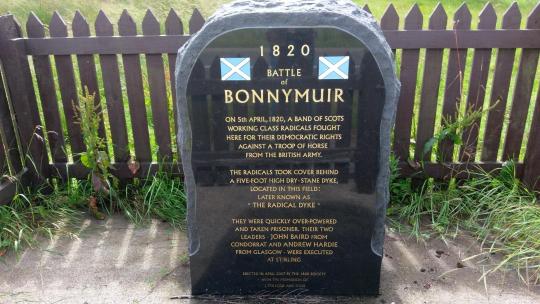
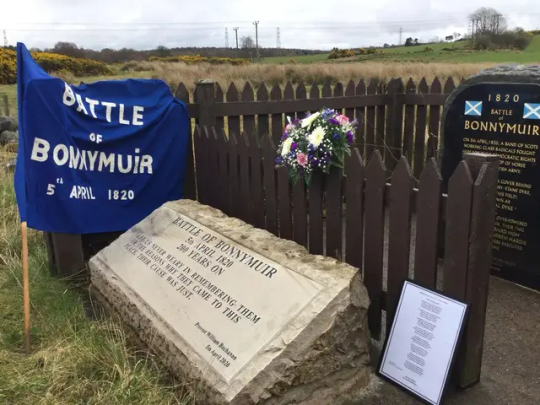

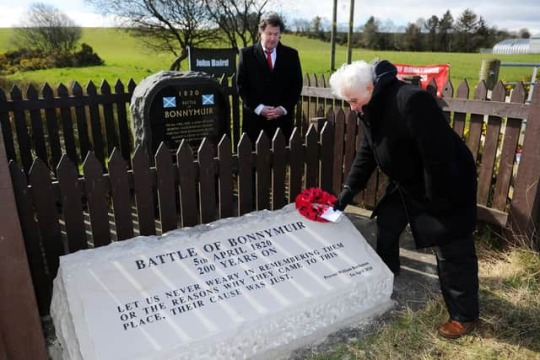
On 5th April 1820 government forces defeated Radical weavers at what became known as the Battle of Bonnymuir.
The ‘Radical Rising’ or ‘Radical War’ of 1820, also known as the Scottish Insurrection of 1820, was a week of strikes and unrest in Scotland that culminated in the trial of a number of ‘radicals’ for the crime of treason. It was the last armed uprising on Scottish soil, with the intent of establishing a radical republic.
Based in Central Scotland, artisan workers (such as weavers, shoemakers, blacksmiths), initiated a series of strikes and social unrest during the first week of April 1820. This pushed for government reform, in response to the economic depression. The Rising was quickly, and violently, quashed, and the subsequent trials took place in Scotland from July to August 1820.
The events of the Rising followed years of economic recession after the end of the Napoleonic Wars and considerable revolutionary instability on the European continent. As the economic situation worsened for many workers, societies sprung up across the country which espoused radical ideas for fundamental change.
In the early nineteenth century, Scottish politics offered power to very few people. Councillors on the Royal Burghs at this time were not elected to their position, rich landowners controlled county government and there were fewer than 3,000 parliamentary voters in the whole of Scotland, hardly a democracy.
It was recognised that the key to change was electoral reform, and the events of the American Revolution of 1776 and French Revolution of 1789 helped to promote these ideas. Radical reformers began to seek the universal franchise (for men), annual parliaments, and the repeal of the Act of Union of 1707.
Between 1st and 8th April 1820, across central Scotland, some works stopped, particularly in weaving communities, and radicals attempted to fulfil a call to rise. Several disturbances occurred across the country, perhaps the worst of which were the events at Bonnymuir, Stirlingshire, where a group of about 50 radicals clashed with a patrol of around 30 soldiers, while Bonnymuir is the most famous, or should I say infamous of the events during this period, it was by no means the only “uprising”
On Monday April 3rd a strike took force across a wide area of Scotland including Stirlingshire, Dunbartonshire, Renfrewshire, Lanarkshire and Ayrshire, with an estimated total of around 60,000 stopping work.
Reports were made of men carrying out military drill in Glasgow while foundries and forges had been raided, and iron files and dyer's poles taken to make pikes. In Kilbarchan soldiers found men making pikes, in Stewarton around 60 strikers was dispersed, in Balfron around 200 men had assembled for some sort of action. Pikes, gunpowder and weapons called "wasps" (a sort of javelin) and "clegs" (a barbed shuttlecock to throw at horses) were offered for sale.
In Glasgow John Craig led around 30 men to make for the Carron Company ironworks in Falkirk, telling them that weapons would be there for the taking, but the group were scattered when intercepted by a police patrol. Craig was caught, brought before a magistrate and fined, but the magistrate paid his fine for him.
Rumours spread that England was in arms for the cause of reform and that an army was mustering at Campsie commanded by Marshal MacDonald, a Marshal of France and son of a Jacobite refugee family, to join forces with 50,000 French soldiers at Cathkin Braes under Kinloch, the fugitive "Radical laird" from Dundee.
Government troops were ready in Glasgow, including the Rifle Brigade, the 83rd Regiment of Foot, the 7th and 10th Hussars and Samuel Hunter's Glasgow Sharpshooters. In the evening 300 radicals briefly skirmished with a party "of cavalry", but no one came to harm.
The next day, Tuesday April 4th, Duncan Turner assembled around 60 men to march to Carron, while he carried out organising work elsewhere. Half the group dropped out, however the remaining twenty five, persuaded that they would pick up support along the way, set out under the leadership of Andrew Hardie. They arrived in Condorrat, which was on the way to Carron, at 5am on April 5th. Waiting for them was John Baird who had expected a small army, not this bedraggled and soaking wet group. He was persuaded to continue the March to Carron by John King, who would himself go ahead and gather supporters. King would go to find supporters at Camelon while Baird and Hardie were to leave the road and wait at Bonnymuir.
What the leaders didn’t know is that the Government had placed spies and agitators among the crowds and they were lured to the confrontation with well-armed, trained soldiers on Bonnymuir,
The authorities at Kilsyth and Stirling Castle had however been alerted and Sixteen Hussars and sixteen Yeomanry troopers had been ordered on 4 April to leave Perth and go to protect Carron. They left the road at Bonnybridge early on April 5th and made straight for the slopes of Bonnymuir. As the newspapers subsequently reported:
"On observing this force the radicals cheered and advanced to a wall over which they commenced firing at the military. Some shots were then fired by the soldiers in return, and after some time the cavalry got through an opening in the wall and attacked the party who resisted till overpowered by the troops who succeeded in taking nineteen of them prisoners, who are lodged in Stirling Castle. Four of the radicals were wounded".
The Glasgow Herald mocked the small number of radicals encountered, but worried that "the conspiracy appears to be more extensive than almost anyone imagined... radical principles are too widely spread and too deeply rooted to vanish without some explosion and the sooner it takes place the better."
The end of the Rising
On the afternoon of April 5th, before news of the Bonnymuir fighting got out, Lees sent a message asking the radicals of Strathaven to meet up with the "Radical laird" Kinloch's large force at Cathkin. The next morning a small force of 25 men followed the instructions and left at 7 a.m. to march there. Among them was the experienced elderly Radical James Wilson who is claimed to have had a banner reading "Scotland Free or a Desart"
At East Kilbride they were warned of an army ambush, and Wilson, suspecting treachery, returned to Strathaven. The others bypassed the ambush and reached Cathkin, but as there was no sign of the promised army they dispersed. Ten of them were identified and caught, and by nightfall on April 7th; they were jailed at Hamilton.
I’ll leave things there for the moment, the aftermath will be told in further posts, one in a few days, and more as the ringleaders were made examples of as they were tried for their parts in the events.
The large memorial stone to mark the 200th anniversary of the Battle of Bonnymuir was unveiled in April 2021.
20 notes
·
View notes
Text
And the penal colony was to remain a viable alternative to the penitentiary, not only in nineteenth-century Britain, but also in twentieth-century France [...]. But what might it mean to have a rigorous and distant form of imprisonment, located in a colony and continuing until the mid–twentieth century? [...]
---
French Guiana emerged as an early favorite for the placement of a French penal colony. [...] Daniel Lescallier, [...] authored a work entitled [...] (Exposition of the means by which to develop French Guiana). In it he points to the example the British have set in exporting offenders to the colonies [...]. Louis-Napoleon, still serving in the capacity of president of the republic, threw his weight behind [...] the exile of criminals as well as political dissidents. “It seems possible to me,” he declared near the end of 1850, “to render the punishment of hard labor more efficient, more moralizing, less expensive [...], by using it to advance French colonization.” [...] The era of the French penal colony was now open; the new French Empire had begun its Botany Bay, even as the British original [penal colony in Australia] wound to a close. [...] The double logic of the British system also drives the French imagination; proposals alternatively concentrate on a desire to punish criminals and rid the Metropole of their presence, on the one hand, and a hope of furthering the work of colonial expansion and economic progress, on the other. Within this logic the focus shifts between the need to colonize, the need to punish [...].
In the case of France, it shimmers with colonial fantasy, allowing future Australias to emerge on tropical horizons. [...] [T]he penal colony requires location. The specificity of the site matters; it is the very place that is to enact punishment [...]. The penal colony is in essence a geographic technique [...]. But despite frequent outcries and sensational reports, the French Guiana penal establishment continued to exist through the end of World War II. [...] As geography itself becomes a technique of isolation, the French penal experiment in Guiana threatens further ordeals implicit in separation from all that is civilized. [...] In sensational accounts these tropics incessantly punish [...]: “Fever and dysentery get every man! Clouds of buzzing mosquitoes and fire ants sting your aching body while you labor [...].” As the commandant of the bagne would inform convicts on their arrival, “The real guards here are the jungle and the sea.” [...] Many of the prisoners, after all, were from urban environments [...]. The terror of Devil's Island takes shape amid metaphoric invocations of the jungle and of the savage [...].
---
For those in Metropolitan France the penal colony served as a hidden punishment, a distant if graphic terror, retaining elements of torture out of public view. Yet it retained a veneer of reformation, for the convicts were still told to “make a new life for themselves.” In addition, shipping convicts away from France in the name of colonization cloaked their punishment in the robes of the “civilizing” mission: they would be part of an effort to build a greater France, to develop Guiana, and to integrate it into a Franco-world system. At the same time the bagne underscored that resistance to the humane norms of France could lead to decivilization and exile in the wilderness. [...]
---
For those sent to French Guiana, however, the penal colony served directly as a public display, a constant reminder of the operations of justice. The convicts were not merely confined but forced to labor on public works. Official executions were performed by that once-humane instrument, the guillotine, but before an audience of convicts and by a fellow convict, far beyond the gates of Paris. A slower execution, that of the “dry guillotine,” the effects of the tropical climate, surrounded the entire process of deportation, reminding the convicts that this punishment could only happen here and not within Metropolitan boundaries. Theirs was a raw and primitive environment, one of torture and deprivation away from the public eye. Against the truth invoked in their conviction -- justice -- lay a suggested truth invoked in their punishment: no longer civilized, they were no longer human.
---
And for those already living in French Guiana, the penal colony also served as a public spectacle, if one not aimed directly at them or of their making. Not only did the proximity of prison life to their own lives parade the power of justice before them in an immediate fashion, but the constant importation of prisoners for this apparatus of punishment emphasized the particularly colonial nature of this power. Uncivilized elements were sent to them; their relation to France was that of a repository for human waste, and acts and punishments deemed unseemly for the homeland could still occur within their boundaries.
In addition, the appropriation of the names “Guyane” and “Cayenne” in myths of the bagne and “Devil's Island” precluded other identities, while burdening the area with a symbolic brand and a historical chain to France. “The bagne,” writes Ian Hammel, “left only a disastrous brand on Guiana.”
Brand here means “trademark” as well as “scar,” indicating purpose, function, and maker.
To be remembered as a penal colony is to be remembered not only as a prison, an exotic place of horror, but also as a colony, the object and product of another. [...] Modernizing France, a convulsive patchwork of provinces, cities, farms, and factories, casts its shadow overseas. [...] The penal colony takes shape at a crucial moment in European colonial understandings of place and labor. Slavery had just been abolished in the French Empire […]. If slavery were at an end, then the crucial question facing the colony was that of finding an alternative source of labor [...], not only in French Guiana, but also throughout colonies built on the plantation model.
---
All text above by: Peter Redfield. Space in the Tropics: From Convicts to Rockets in French Guiana. 2000. [Bold emphasis and some paragraph breaks/contractions added by me. Presented here for commentary, teaching, criticism purposes.]
91 notes
·
View notes
Text

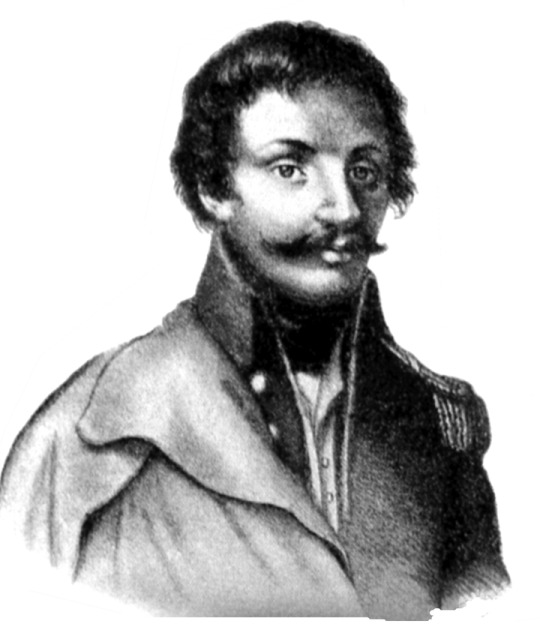
Archduke Karl:
The man who handed Napoleon his first significant defeat at Aspern, which has to be sexy to someone. His equestrian portrait and the statue on the Heldenplatz are both very cool. He also the unenviable task of trying to talk about reform to Franz II/I and Metternich, so you have to feel for the guy a bit. Had seven children, so a sexyman to his wife at the very least. Definitely a much sexier man than Franz II/I, but that might not be saying very much.
Admin note: the equestrian portrait:

And him with his five of those seven children:

Władysław Franciszek Jabłonowski:
[no propaganda submitted]
29 notes
·
View notes